Should 16-Year-Olds Have The Right To Vote?
When I turn 18 next year, one of the first things I will do is to register to vote. To me, voting shows that a person belongs to a society. It symbolizes maturity and gives the voter a voice among millions. I have a year before I will have that voice, but what if I could vote right now? The idea of voting as a 16 or 17-year-old never crossed my mind until I heard about a group of New York City teens fighting for the right to vote in city elections. When I found out that some of these teenagers were gathering at City Hall to draw attention to their cause, I decided to see what they were all about.
On the steps of City Hall, I met the passionate group of teen members of Future Voters of America. The teens at the rally told me that since they live in a country that prides itself on being democratic, they should be able to participate in that democracy. They felt their needs and ideas were being overlooked by the city.
But they are not being overlooked by City Councilmember Gale Brewer, who has re-introduced legislation to allow 16 and 17-year olds to vote in local elections. New York City would be the first city in the United States to bestow this right, though a similar effort is underway in Cambridge, Massachusetts, and 16-year-olds already have the right to vote in local elections in nations as different as Israel, Germany and Brazil. In Iran, kids as young as 15 are reportedly allowed to participate in elections.
“A 13-year-old can be tried as an adult. A 16-year-old can drive and have a job,” Brewer said. “Teens need to have a say in the policies and decisions that affect their lives.”
The legislation is now in committee and if the City Council passes it and Mayor Michael Bloomberg signs it into law, Brewer estimates that as many as 200,000 16- and 17-year-olds would have the right to vote in city elections.
Brewer stood by her teen supporters at the recent rally at City Hall to draw attention to teen voting rights. And in a letter to City Council Speaker Christine Quinn, Brewer argued that the legislation would encourage more teens to get involved in local issues. “Their voices would be heard on key issues such as education, housing, community development and environmental concerns,” she wrote. “If given a chance to vote, the youth could increase their interest in civic life and continue voting in future years. It is often argued that many 18 to 20 year olds do not vote because they have not been exposed to involvement in political participation. This bill would address this issue.”
Students at the rally such as Eidia Monei from La Guardia High School and Aneeba Rehman from Hunter College agreed, arguing they are mature and knowledgeable enough to cast a ballot on issues such as public housing and the environment.
City Councilmember James Oddo of Staten Island is one of those opposed to the legislation. "We applaud the young activists who have such a strong interest in government, and we wish more of their classmates felt as strongly as they do," wrote Christopher DeSicco, spokeman for Oddo's office. "However, they appear to be the exception and not the rule, and we believe extending the franchise to teenagers under the age of 18 is simply bad public policy. The election of municipal officers is serious business and the city’s elected officials must approve a budget that now exceeds $50 billion annually. The choices made will affect the city for years. We cannot leave such important decisions to kids who are still in high school and who may not yet even have a basic understanding of basic American government.”
I myself am not sure that teens would take advantage of their voting rights. Of course, many adults don’t either. The teens who would be mostly likely to vote if the voting age is lowered do have strong opinions and ideas about public policies. And, say the advocates of a lower voting age, teens would bring a fresh new perspective to politics, their energy and spirit reminding adults of the excitement they once felt when they saw a world before them ready to be changed.
Desiree Bailey is a junior at Benjamin Cardozo High School in Queens, and a writer for the teen-written magazine New Youth Connections, published by Youth Communication. Â
Drawing the Line: Redistricting Reform
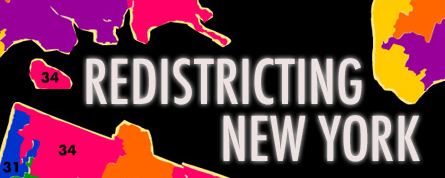
Every ten years, public officials draw strange shapes on maps of New York State. Some resemble coffee spilled on maps; others look like huge claws or Abraham Lincoln riding a vacuum cleaner. This is not an exercise in abstract art, however; it is how legislative districts are drawn in New York State.
Critics have long mocked New York's acceptance of partisan redistricting – or gerrymandering – as antidemocratic, saying it explicitly discourages competitive elections. To date, there has been little momentum in Albany to change the way redistricting is carried out, though, largely because state legislators benefit from the current system. That may be changing however. The four major party candidates for governor have all recently called for serious redistricting reform, and a bill that would create an independent commission has been introduced into the state assembly.
There is wide agreement that change is needed, but some confusion about how that change would look.
"We need to know much better what we're getting into when we talk about reform," said Jeremy Creelan at a recent conference on redistricting organized by Citizens Union Foundation, which publishes Gotham Gazette, and the School of Public Affairs at Baruch College.
Reformers are grappling with a series of questions:
- Should creative districts be created by trying to keep the numbers of Democrats and Republicans even?
- How important is it to have districts correspond to existing political borders, like county lines?
- Should neighborhoods have to be wholly included in single districts, or can they be split up?
- Should redistricting be used to create bases of political power for groups that have traditionally lacked it?
- What is the harm in having districts that look like historical figures riding household appliances?
HOW DOES GERRYMANDERING WORK?
Theoretically, redistricting updates district lines in order to reflect shifts in the state's population. The new districts must all contain roughly the same number of people (there is a ten percent allowable range of population size between districts). Districts are also supposed to be "compact and contiguous", so that they reflect actual geographic communities.
But the main criteria now used to determine how district lines are drawn, critics charge, is how well they will serve incumbent lawmakers. Lines now dip and weave to include friendly populations in some districts and cut unfriendly populations out of others. In at least one case, the lines swerve around several blocks, with the intent of protecting one incumbent from a potentially dangerous political opponent.
The people who benefit most from partisan redistricting are the ones who actively engage in it – those who already hold public office. Being a lawmaker in Albany is one of the more secure forms of employment that exists. About 98 percent of incumbents are reelected in each round of elections, usually by huge margins. Nearly 60 percent of incumbents in the last election either ran unopposed or faced an opponent who had raised less than $1,000.
In Texas, Republicans recently gerrymandered their way into greater representation on Congress over the objections of Democrats. In New York, the benefits are more bipartisan. The two parties have effectively agreed that the Senate belongs to the Republicans and the Assembly to the Democrats. Due to their efforts, there has been no change in the party that has controlled either house of the state legislature for over 30 years.
HOW DOES GERRYMANDERING HURT?
The practice of incumbents drawing district lines with the explicit goal of protecting their own jobs has been deemed legal by both state lawmakers and the courts. But because districts are drawn to shield legislators from competition, critics say, these officials tend to ignore the concerns of the constituents (whose votes don’t really matter) and instead focus on keeping in the good graces of party leaders (whose political support matters) or powerful interest groups (whose money does).
"I think it is that most New Yorkers feel that they are not in the system. There is a club of a small amount of people who have immense power in this state, and it leaves out most of us," said Rachel Leon of Common Cause New York.
Without fear of being held accountable for their lack of productivity, say Leon and others, state lawmakers perpetually fail to pass budgets on time, confront problems with Medicaid, implement the requirements of the Help America Vote Act, or address the problems of New York City public schools. The lack of real electoral competition also keeps lawmakers from minority parties from having a say in the legislative process. Strangely shaped districts make door-to-door campaigning much harder, handicapping grassroots candidates who want to challenge established incumbents. [See excerpt from forum: Disenfranchising Political Minorities]
Still, it is not only lawmakers that seek to gain from drawing lines that protect incumbents. Lucia Gomez began working on the last round of redistricting for the Puerto Rican Legal Defense Fund, and saw nonprofit agencies working to help incumbents draw themselves secure districts. At first she assumed that politicians were taking advantage of their naiveté, but Lucia soon realized that these agencies were making a conscious political choice.
"Nonprofits and social services [organizations] rely so heavily on contracts that are provided by state agencies that they don't know any other way of having a relationship with their elected official other than doing whatever that elected official wants," she said. "A lot of our nonprofits are being used – and they love being used." [See excerpt from forum: Why Nonprofits Encourage Gerrymanding]
In other cases, those helping legislators to create secure districts have no choice.
About two-thirds of the 65,000 people in New York State prisons are locked up in facilities in rural, largely white, counties. These prisoners, who for the most part are racial minorities from urban areas, are counted as residents of the counties where they are incarcerated. They cannot vote there, however. Seven upstate senate districts containing prisons would not have enough people to get their own seat in Albany if it weren't for the non-voting prisoners also residing there.
The senators representing these districts, therefore, have a personal interest in maintaining high numbers of prisoners, said Maggie Williams of the Bronx Defenders.
"They're very aware that the reason that they're able to hold onto their seats is because of the prisons in their district," she said. [See excerpt from forum: The Way We Count Prisoners is a Crime]
WHAT IS THE GOAL OF REDISTRICTING REFORM?
There may be widespread agreement on the basic problem: incumbents use gerrymandering to guarantee a minimum level of opposition in elections. Most agree that more competition is desirable. But what is the best way to get there, and what else should be taken into account? [See excerpt from forum: Should Legislative Districts Be Redrawn to Encourage Competition?]
Sensibly Shaped Districts: Some say that the only consideration that should be taken into account when drawing districts is that they are compact, contiguous, and contain roughly the same amount of people. It is inappropriate to guarantee representation for certain ethnic groups, for instance, or to force competition between political parties. Otherwise redistricting remains a manipulative process; only the goals have changed.
Competition Will Take Care of Itself: Therefore districts, some say, should be formed only to reflect geographic communities. If they do not strive for any pre-determined outcome, some believe, legislators will automatically face challenges and thus be held accountable.
"A process that is indifferent to competitiveness will produce the result of competitiveness," said EJ McMahon of the Manhattan Institute.
Empowering the Disenfranchised: Others argue that districts must reflect the communities that people live in – even if these communities are not necessarily the most compact geographically. Furthermore, advocates for minority voting rights also believe that the historic lack of representation that such groups have suffered from needs to be taken into account. In fact, federal law requires it.
"The goal of redistricting and the election process is to give [communities with shared interests] a fair opportunity to have their interests represented," said Steve Carbo of DEMOS. "It is not a clean [process] that is best served by drawing the straightest and narrowest lines that are possible."
DRAWING THE LINES IN NEW YORK STATE
In other states, ostensibly independent commissions have been established to weight these myriad criteria in order to redraw political districts. Two states that have been cited as models are Iowa and Arizona.
Looking at these other states as a guide, Assemblymember Michael Gianaris is pushing a plan to create an independent commission in New York State that would handle the next round of redistricting in 2012. [See Gianaris excerpt from forum].
"We have a system now where the legal and stated goal is to actually reduce competition," he said. "If we just take that out of the equation, I feel we wouldn't have to worry too much about making sure Democrats and Republicans [are equally represented in each district], because you'd end up getting de facto competition."
All districts would have to have to be within one percent of the population of all others (as opposed to ten percent now), and the commission would be prohibited from creating a district with a partisan goal in mind. Its recommendations would have to be either approved or rejected by the legislature as a whole; lawmakers would not be allowed to make changes – except in the case of prolonged deadlock.
In other places, questions have been raised about the actual independence of such commissions. Gianaris' plan addesses this by putting "several layers" between the members and state legislators – instead of having direct appointments.
Because the state's population has been shifting towards the Democrats, the Republicans who control the State Senate have the most to lose from an impartial redistricting. But experts say that the Republicans will likely lose control of the senate no matter what. Smelling blood, some Democratic senators have been hostile to the idea of an independent commission as well, according to Gianaris.
Without a senate sponsor, the idea of an independent commission is currently stagnating. What may spark action, say advocates of reform, is the energy that the next governor puts into the issue. With all those running already lining up to support a new way to approach redistricting, they are optimistic that reluctant lawmakers will be forced to accept change.
"The one trump card we have is our gubernatorial candidates being very aggressive on this," said Gianaris. In the minds of reluctant legislators, he said, "the one thing worse than the legislature creating an independent plan is the whole thing getting thrown into court."
New York on Capitol Hill
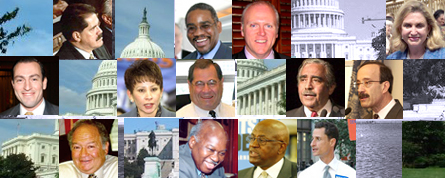
The police have charged Nicholas Morris with the murder of David Pacheco, the 2-year-old Bronx boy shot to death in his family car on the way to Easter dinner. But speaking during his meeting with 14 other mayors on guns in April, Mayor Michael Bloomberg cited another culprit: Congress.
|
Related Articles: |
"The only thing that would have helped that child is if we had the courage to stand up and get the guns off the street," Bloomberg said. "The number of people in Washington who are deliberately voting to permit guns to go to the hands of criminals is really worrisome."
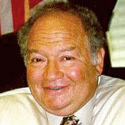 Gary Ackerman |
New York City politicians and law enforcement official often complain that, despite tough state and local gun laws, firearms remain readily available on the streets of New York City because of Congress’ opposition to gun control. But it isn’t only guns. The actions of the U.S. Congress affect New Yorkers in hundreds of ways, from student standardized test scores to the war in Iraq, where 35 New York City residents have lost their lives.
The 435 member House of Representatives includes 13 representatives from New York City, 12 of them Democrats. All House members are up for re-election this year. One, Major Owens in Brooklyn, has announced he will not seek re-election prompting five Democrats, including his son, two City Council members and two members of the State Legislature, to try to replace him (see related story).
Next door to Owens’ district, longtime incumbent Edolphus Towns is facing three challengers (see related story).
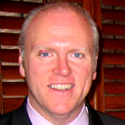 Joseph Crowley |
But New York’s other House members seem to have reaped the big blessing of incumbency – little serious opposition. While candidates have until July 13 to file for the September 12 primary, most express their intentions much earlier. And so far, there do not seem to be many viable candidates out there. According to Federal Election Commission records, K.T. MacFarland has raised money in the 14th Congressional District, but the Republican now seems inclined to forego a challenge to incumbent Representative Carolyn Maloney in Manhattan’s Silk Stocking District and run against Senator Hillary Rodham Clinton instead.
Despite the apparent paucity of exciting races here, the fall’s congressional contests could make a big difference for New York City. If Democrats gain control of the House, the New York delegation, for better or worse, could hold more power in Congress than it has since 1994 when the Republicans, led by Newt Gingrich, took control of the House.
WHAT BLOOMBERG WANTS FROM CONGRESS
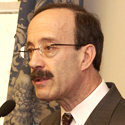 Eliot Engel |
Despite the decline of the kind of urban agenda that played a key role in national politics in the 1960s and into the 1970s, Congress matters. No one seems to know this better than Bloomberg. Since his re-election in November, he has been increasingly outspoken on national issues. New York represents a big source of campaign money for candidates from both parties, so Bloomberg wants the city’s donors to put their mouths where their money is and make sure candidates for national and state office promise to pursue New York City’s interests. A crib sheet the mayor has distributed lists five litmus tests, four of them at least partly Congress’ responsibility:
Transportation: Use tax credits that were part of Washington’s aid package to New York after 9/11 to build a rail link from lower Manhattan to Kennedy Airport;
Security: Distribution of homeland security funds to state and local governments, based on the level of threat facing the city or state;
Development: Opposition to federal eminent domain legislation that would restrict the use of this power and, in Bloomberg’s words, “cripple responsible redevelopment and revitalization”;
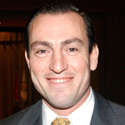 Vito Fossella |
Housing: Support for financial incentives for affordable housing.
WHAT WASHINGTON CAN DO
And Bloomberg is not the only one with a list of demands for Congress. Other groups and individual have their own ideas about what Congress can do for them. A few examples:
Health Care
About $1.8 million New Yorkers do not have health insurance. “The biggest issue we face as New Yorkers is access to affordable health care,” Bloomberg said last fall. Many observers do not expect that to change significantly until the House and Senate enact some kind of national health plan.
 Carolyn Maloney |
Housing
The New York City Housing Authority recently announced it plans to raise fees and rents for some public housing tenants. The public housing authority said that it faces a budget shortfall because, while energy and pension costs continue to rise, the federal government has cut funds to help house low-income New Yorkers. If Congress appropriated more money for housing, the city could keep rents down or provide more services to public housing residents.
Immigration
An estimated 652,000 illegal immigrants live in New York City, and more than a third of New Yorkers were born outside the United States. The House of Representatives has passed a very tough bill, which sets criminal penalties for illegal immigrants and people who help them and tightens border security. The Senate is currently debating immigration. Any bill it passes would have to be reconciled with the House version. The outcome of this debate could determine whether thousands of New Yorkers can remain in the country legally or be forced to leave.
 Gregory Meeks |
Transportation
After decades on many New Yorkers’ wish lists, the Second Avenue subway could finally become a reality. One reason for this is that Congress appropriated money for the new East Side line and other transit projects in a major transportation bill passed last year.
Sometimes congressional involvement in New York can seem almost petty. In 1986, for example, Congress, at the behest of then Congressmember Guy Molinari, decided to charge only a one-way toll (into Staten Island) on the Verrazano Narrows Bridge. Critics charge that this has increased congestion, caused accidents and costs the Metropolitan Transportation Authority some $10 million a year. Despite that, the toll cannot be charged in both directions without an act of Congress.
THE POWER OF THE PURSE
Congress controls billions of dollars that affect New York – and they do not always spend it to the city’s advantage. Bloomberg has said the city sends $13 billion more in taxes to Washington than it gets back in spending. And next year's budget, proposed by President George W. Bush and now being considered by Congress, could make that imbalance worse.
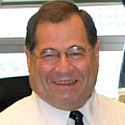 Jerrold Nadler |
According to an analysis by State Comptroller Alan Hevesi, the proposed federal budget, released in February, could cause the state to “lose billions in federal funding associated with reductions in Medicaid and Medicare, education, transportation and labor spending.” While Bloomberg asked Washington for $100 million more this year, the proposed budget cuts funds to the city by $1.35 billion, says a report by Representative Anthony Weiner, a Democrat.
The cuts cited by Weiner include a $32 million cut in the $203 million for homeland security the city gets from Washington and $84 million less for Medicaid and Medicare. “It is a budget that cuts the Big Apple to the core,” Weiner has said.
The budget currently is in Congress where some conservative Republicans are calling for more cuts in social programs that normally help cities. Before the budget can become reality, both the Senate and House must reconcile any differences between them and pass a budget that President Bush will sign.
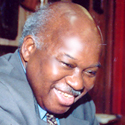 Major Owens |
Of course Congress’ effects on New Yorkers extends beyond specific budget lines or programs directed at the city. As Americans, residents of the city are affected by laws passed by Congress. And so, when Congress bars discrimination, New Yorkers are among those it protects. When it calls for schools to test more, city students must fill in their bubble sheets. When it slashes taxes, some New Yorkers get to keep more money. And when Congress agrees to the war in Iraq, New Yorkers are among those who fight it.
THE NEW YORK DELEGATION
To represent New York’s interests, the state has, like every other state, two senators. It also has 29 members of the House of Representatives. Thirteen of them are all or partly from New York City. The only Republic among those 13 is Vito Fosella of Staten Island.
Many, though not all, of the Democrats are at the left end of their party. Gary Ackerman, for example, has a 95 percent rating from the liberal Americans for Democratic Action and a 4 percent from the American Conservative Union, while Jerrold Nadler and Jose Serrano are among the most liberal members of the House,” according to the Almanac of American Politics. In 2002, seven of New York City’s representatives were among the 156 members of the House who voted against the war in Iraq.
As the country has become increasingly Republican, the New York delegation has become more Democratic. Since Charles Schumer defeated Republican Alfonse D’Amato in 1998, both the state’s senators have been Democrats. Of its 29 representatives, 19 are Democrats.
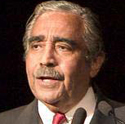 Charles Rangel |
Although the senators are in the minority party, both of them hold a high profile. Schumer is the top – or, in Washington parlance, ranking -- Democrat on the judiciary committee, playing a key role in confirmation battles over judges. He also chairs the Democratic Senatorial Campaign Committee, which is spearheading efforts to win a Democratic majority in the Senate. And Clinton, who is up for re-election this year, is, of course, a likely presidential candidate.
But the representatives seem to have a tougher time on conservative Republican capital hill. “Except for Fossella, they are all Democrats in a Republican Congress so there is a limit to their effectiveness,” said Josh Kurz, political editor of the Capitol Hill newspaper Roll Call.
“They’re doing about as well as could be expected,” said Marie Horrigan, political reporter for Congressional Quarterly. She added that some of the New Yorkers, such as Carolyn Maloney, have focused on promoting liberal issues, which are difficult to advance in this Congress.
The state has also lost clout in terms of numbers. In 1960, New York had 43 representatives in the House, by far the largest number in Congress. Today it has the third largest – behind California and Texas – and it will probably lose more seats after the 2010 census.
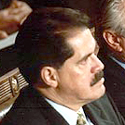 Jose Serrano |
The state’s fractured politics also take their toll. Representatives from some other big states typically meet together to set legislative priorities. But, the Buffalo News observed last year, “New York’s congressional delegation doesn’t work that way, mostly because of the New York City-upstate split in needs and interests.”
No member from New York City chairs a committee – because that role always goes to a member of the majority party. Fossella, elected in 1997, has little seniority, so does not chair any committees. Earlier this year, Joseph Crowley tried to become vice chair of the House Democratic caucus. Although insiders saw his as the frontrunner, he lost out to John Larson of Connecticut. Despite that, Kurz said, Crowley “is seen as a potential player in the future.”
An admittedly subjective review of the delegation, done in 2003 by the now seemingly defunct PoliticsNY web site gave New York’s representatives mixed marks. Jerrold Nadler (“one of the smartest liberals in Congress”) and Anthony Weiner (“among the best the Empire State sends to Congress”) scored highest. Major Owens (“doesn’t have much to say about what’s going on in Congress”) and Ed Towns (“the lowest profile member of the New York congressional delegation”) were at the bottom of the list.
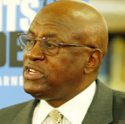 Edolphus Towns |
The most prominent member of the delegation – and the longest serving – is Harlem’s Charles Rangel. He was first elected in 1970 and now serves as the ranking Democrat on the House Ways and Means committee. The New York delegation can be divided into two groups, said Kurz: “There’s Charlie Rangel and there’s everybody else.” Even as a member of the minority he manages to have influence. “He’s well known, well-respected, bombastic, and he gets on TV,” Kurz said.
LOOKING TO NOVEMBER
Even though he is currently not facing any serious opposition, Rangel has a lot at stake in November’s elections. If the House switches to the Democrats – a shift of 15 seats from the Republican to the Democratic column would accomplish that – Rangel would become chair of the committee. Becoming chair “would be the brass ring,” Rangel told the New York Observer. It would also give him a lot of say over policy on welfare, Medicaid and Medicare, issues of obvious concern to many of his Harlem constituents and other New Yorkers.
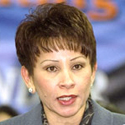 Nydia Velazquez |
If the Democrats do not win the House – and Rangel his leadership post – the congressman has indicated he might retire. That, some think, would further erode the city’s power in Congress. “There is only one Charles Rangel and when he leaves, there is going to be a power vacuum,” his colleague, Gregory Meeks of Queens has said.
New York State could help determine whether Rangel gets the “brass ring” or becomes a private citizen. Optimistic Democrats have said about a half dozen Republicans House seat in the state are “in play’’ – meaning they think they have a crack at them. Outside observers see a lower number, but think New York could see one or two seats switch from Republican to Democratic hands.
For now, though, it appears the GOP will keep its one seat in the city. Democrats had considered mounting a vigorous challenge to Fossella, but three city council members all declined to take on the race. His remaining opponent is Bay Ridge lawyer Stephen Harrison. The race is “very hard for a Brooklyn Democrat, even for someone from Bay Ridge or Dyker Heights," political consultant Hank Sheinkopf told the Daily News. "It would be very difficult for a Democrat to win”
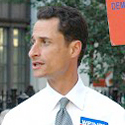 Anthony Weiner |
The other New York City seats are, by and large, “safe,” according to the Almanac of American Politics. The people holding them – many of whom have been in Congress for more than a decade-- think the city would fare better in a Democratic House of Representative than in the current Republican one. And so New York’s fortunes in the next Congress may depend far more on what happens in suburban Denver, eastern Iowa and Chillicothe, Ohio, than the politicking on the city’s own sidewalks.
Â




